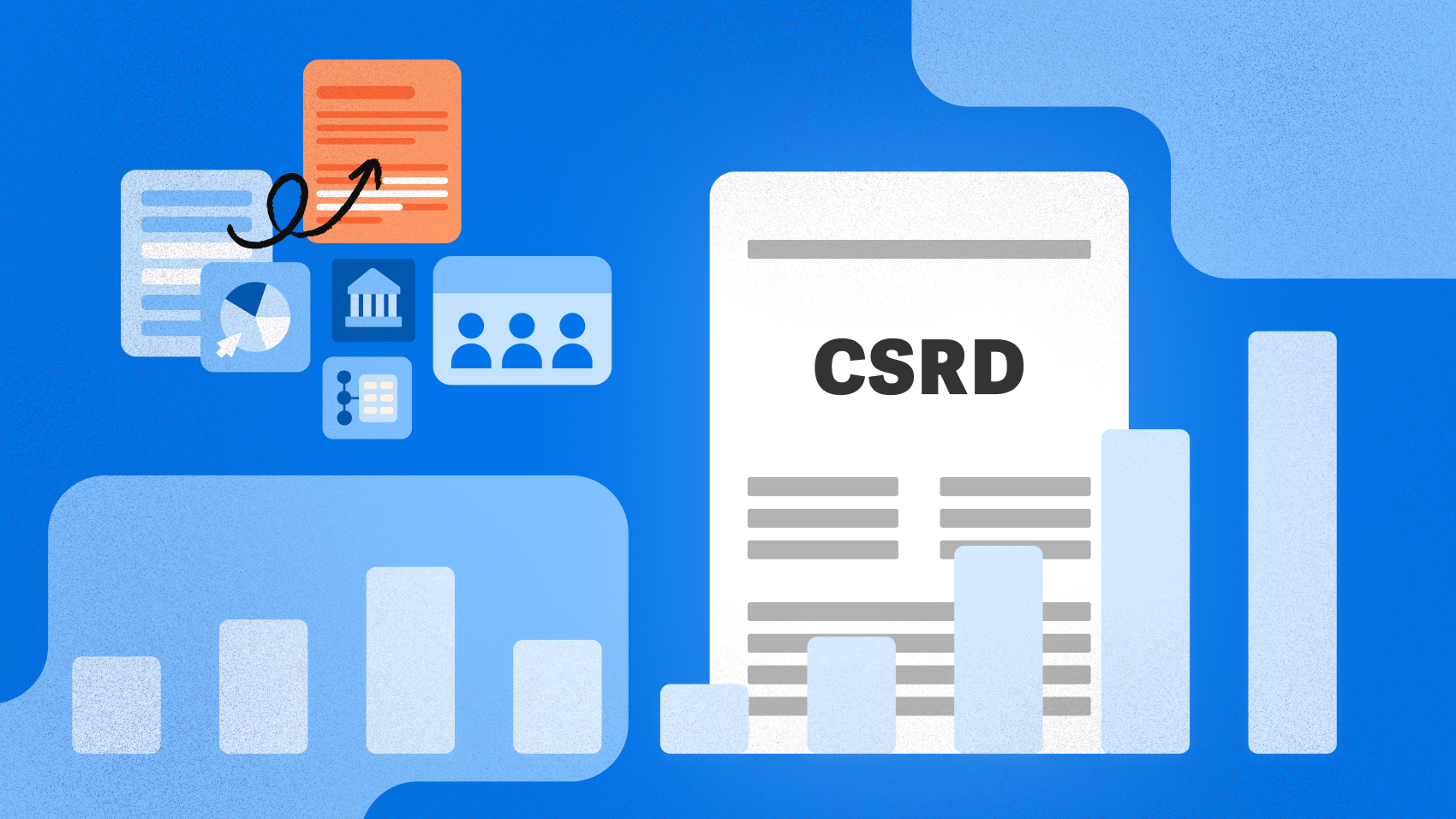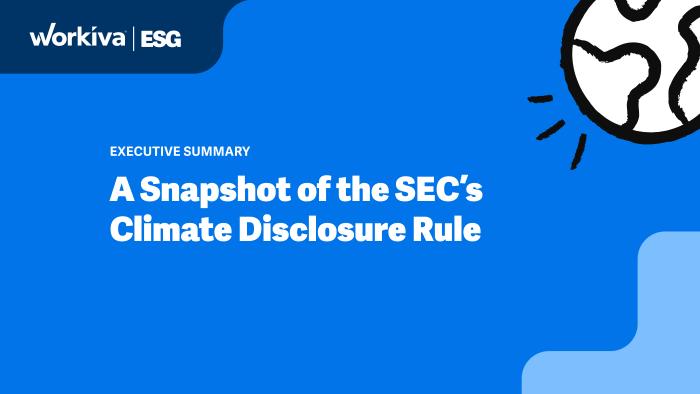CSRD Data Points & Disclosure Requirements

The Corporate Sustainability Reporting Directive (CSRD) disclosure requirements are the new guidelines for integrated finance and sustainability reporting.
The legislation expands on its predecessor, the Non-Financial Reporting Directive (NFRD). It does so by introducing a new set of standards: The European Sustainability Reporting Standards (ESRS). This establishes a new shared framework for reporting non-financial data that makes environmental, social, and governance (ESG) impact clear and easily comparable across all businesses.
This transition to CSRD has already begun. All organizations that were already within the existing NFRD scope began reporting at the start of 2024’s fiscal year. The following year, all large organizations—firms with a net turnover of €40 million or more, at least €20 million in assets, and 250+ employees—will also be required to abide by CSRD. Eventually, all businesses will be subject to ESG reporting.
If you haven’t started preparing, start today! There’s still time as long as you make it a priority. This article is meant to give you some guidance on the CSRD preparation process, along with metrics to make sure you’re on the right track.
How has the CSRD changed from NFRD?
Among the many differences between CSRD and NFRD are the standards companies must now use. For CSRD disclosures, all companies must use ESRS. But aside from the mandatory disclosure requirements, you are not shoehorned into tracking data points that don’t apply to your business. The data points you track within those standards will still vary depending on what you’ve determined is material through a double materiality report (more on that later).
What data points and disclosures do you need to track under CSRD?
CSRD contains 82 disclosures and 1,144 data points to choose from for your disclosures. Again, you do not have to meet every one of these. While there are certain mandatory disclosures, you will only need to track additional data points and disclosures that are revealed in the materiality/double materiality research phase.
How has reporting changed under CSRD?
In addition to the differences in data points and disclosures, CSRD also brings three new requirements to how you report on ESG initiatives: double materiality, annual reporting, and assurance.
Double materiality
Materiality focuses on the inward impact of ESG on a company—how prepared or profitable you are in the face of these standards. Double materiality builds on that, determining whether a sustainability matter has to be included in a given initiative’s sustainability report. This forces companies to also consider the outward impact of their ESG efforts—how the company affects the environment and the societies they interact with.
CSRD standards require companies to look through both lenses. All companies preparing for CSRD initiatives must conduct a double materiality assessment to determine which disclosures and data points would be material for their business. Now, companies can’t hide from ESG. The market, public opinion, and investors are all now concerned about the outward impact a company has.
ESG integration into annual reporting
The CSRD expands on existing NFRD requirements, mandating that tens of thousands of European and U.S.-based companies include ESG data in their annual reports. No longer is annual reporting reserved for large public interest companies with more than 500 employees, as was the case under NFRD.
Assurance
Companies subject to CSRD are required to seek limited assurance over all sustainability information by FY 2026. CSRD limited assurance states that your third-party auditor gathered sufficient evidence to validate your sustainability report and no material modifications are required for ESG.
After limited assurance is implemented, companies will then be subject to reasonable assurance starting in FY 2028. Reasonable assurance states your third-party auditor recognizes the information reported is materially correct.
How can you identify the right data points and disclosures?
As we previously mentioned, you do not need to report on every data point and disclosure listed in CSRD. You first need to determine which of these are material to your business. There are three steps you can take for this discovery process.
1. Double materiality assessment
A double materiality assessment should be one of the first steps to determine the right data points and disclosures. This assessment is a structured framework that empowers you to discover the most critical ESG concerns.
The ESRS 1 General Requirements lay out what a double-materiality assessment should look like. They include a step-by-step guide for the assessment, which maps out key business stakeholders, determines areas of impact, and assesses financial materiality.
2. Surveys and interviews
Aside from key business stakeholders, you should expand your research to surveying individuals outside your organization to gain a broader perspective on materiality.
Be sure to talk to true experts in the field. While surveying has long been the norm for determining materiality, the average person has no idea how your company relates to ESG standards—focus groups may not yield fruitful results. You’re much more likely to gain valuable insights when interviewing experts in applicable ESG concerns.
3. Gap analysis
A third party can help identify what exactly you need to work on with a gap analysis that reveals all the shortcomings you need to rectify to meet CSRD standards. A gap analysis will analyze the compliance of your current reporting based on compliance checklists, including the identification of legislative trends and focus areas.
4. ESG software
Platforms like Workiva allow businesses to sift through their data to identify and prioritize issues that are material for your business. When you’re lost in a sea of data, ESG software offers respite; collecting and organizing data so you can focus on strategic insights.
How to tell if you’re still on track for CSRD compliance
If you are still in the preparation phase for CSRD, take the time to make sure you’re not off track. You’ll know what you need to work on based on the report you get back from the third-party assurance assessment. The trick is understanding why you are off track and what to do about it.
Identify where you are off track
Is double materiality misaligned or unclear? Go back to research. Everything surrounding ESG cascades from materiality, so yours should be as concrete as possible before you move forward in your preparation.
Do you lack data point accuracy for ESRS? Lip service is ubiquitous in this space, but it won’t get you very far with ESRS. Make sure your data stems from a single source of truth with an audit-ready dataset.
How to stay on track
If you are on track for CSRD compliance, congratulations! It’s a tall order, and completion deserves celebration. If you need help maintaining this course, consider investing in the right tech stack that can support your ESG efforts.
You can also rely on Workiva’s platform to instill trust and transparency in your ESG data. Our ESG solution, ESG Explorer, now discloses values under ESRS—helping you discover disclosures that matter to CSRD.
Workiva gives you the power to confidently manage all your financial and sustainability reporting in a single place, bringing together disparate teams while building trust and transparency within your data. While we speed up reporting, you can focus on driving success for your business, people, and the planet.
An Introduction to the CSRD
To many, the CSRD will be a game changer in ESG reporting. But what is it, who will it affect, and when does it come into force? This introduction breaks it all down.


